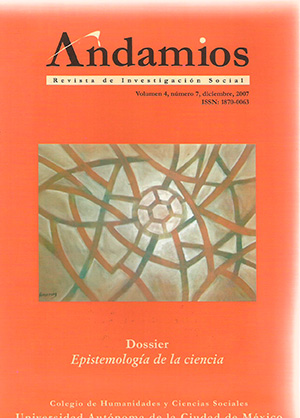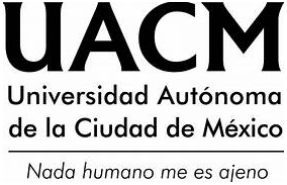TO CAUSE OR TO LET IT HAPPEN
DOI:
https://doi.org/10.29092/uacm.v4i7.312Keywords:
Causation, omission, preventor, couterfactuals, eventsAbstract
Among the topics covered by discussion on causation between events is causation that involves omissions. If, by having taken precautions, the robbery would not have occurred, then the omission of not having taken precautions is the cause for the robbery. On the other hand, if the robbery did not take place because of the precautions taken, we say that those precautions are a preventor of the robbery. Some kind of mirror relationship has been suggested from which derives that not taking precautions and removing them is equivalent. In this paper, such an equivalence is analyzed and it is shown that it has no support for the cases which involve states of affairs. Analyzing causation involves dealing with causation by omission and causation of omission. In the first case, omission to take precautions is the cause of a certain disaster. In the second, having taken such precautions is the cause for not obtaining the mentioned disaster: to take precautions is a preventor of the disaster. It has been pointed out that there exists a mirror relationship between omissions and preventors, giving as a consequence that omitting to establish preventors should be equivalent to removing preventors previously provided. In this paper we analyze this equivalence, and conclude that it cannot be supported when states of affairs take place in the role of causes or of effects.
Downloads
References
DOWE, P. (2000), Physical Causation. New York: Cambridge University Press.
FLICHMAN, E. (1989), “The causalist program. Rational or irrational per- sistence?” en Crítica. Revista Hispanoamericana de Filosofía, 21, núm. 62, pp. 29-53.
LEWIS, D. (1973), “Causation” en Journal of Philosophy, 70, pp. 556- 567. Philosophical Papers, vol. II. New York/Oxford: Oxford University Press, 1986, pp. 159-171.
_____ (1986), “Postscripts to causation” en Philosophical Papers, vol.II. New York/Oxford: Oxford University Press, 1986, pp. 172- 213.
_____ (2000), “Causation as Influence” en Journal of Phil. 97: pp. 182-197. [Reimpreso en John Collins, Ned Hall y L. A. Paul (eds.) 2004: 75-106.]
MIGUEL, H. y J. PARUELO (1998), “Causación, producción y función” en Crítica. Revista Hispanoamericana de Filosofía, vol. XXIX, núm. 87, diciembre, 1977, pp. 53-90.
NUTE, D. (1980), Topics in conditional Logic. Londres: Reidel Pu- blishing Company.
Published
Issue
Section
License
This Journal is licensed under Creative Commons Mexico 2.5. It is allowed to reproduce and disseminate the contents of the Journal for educational or research purposes, not for profit, as long as they are not mutilated and cite the source (Andamios, Revista de Investigación Social) and the author.
The copyright of the articles published in Andamios, Revista de Investigación Social are transferred by the author(s) to Universidad Autónoma de la Ciudad de México when the originals have been accepted, so that they are published and distributed both in the printed and electronic versions of the Journal. However, as established by law, the author(s) retains their moral rights. The author(s) will receive a form of assignment of copyright that they must to sign when their original has been accepted. In the case of collective articles, the signature of one of the authors will suffice, provided that the latter has obtained the consent of the others.
Authors may use the material of their article in other works or books published by themselves, with the condition of quoting Andamios as the original source of the texts.
The articles contained in this publication are the responsibility of their authors and do not compromise the official position of Andamios, Revista de Investigación Social of the Universidad Autónoma de la Ciudad de México.


